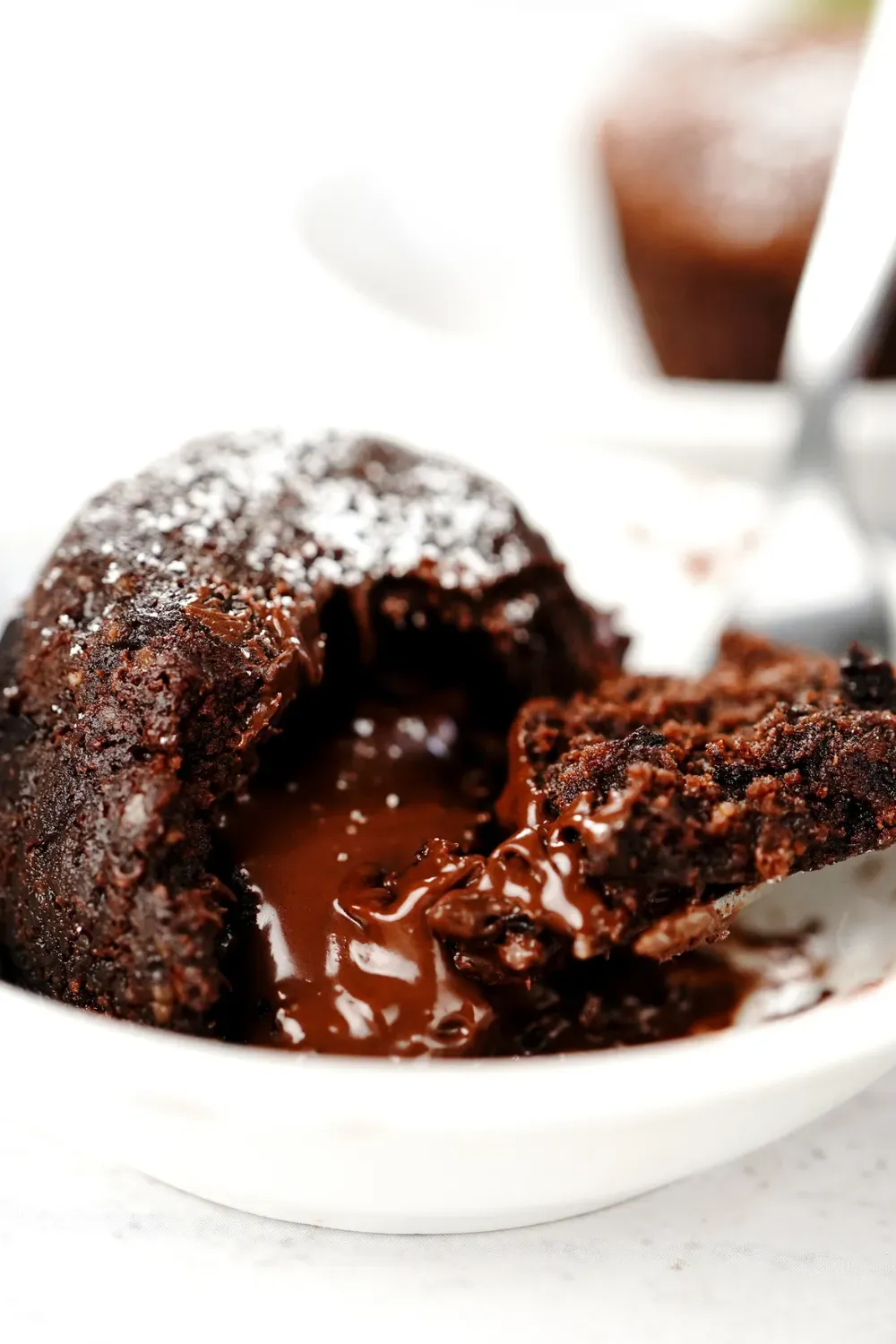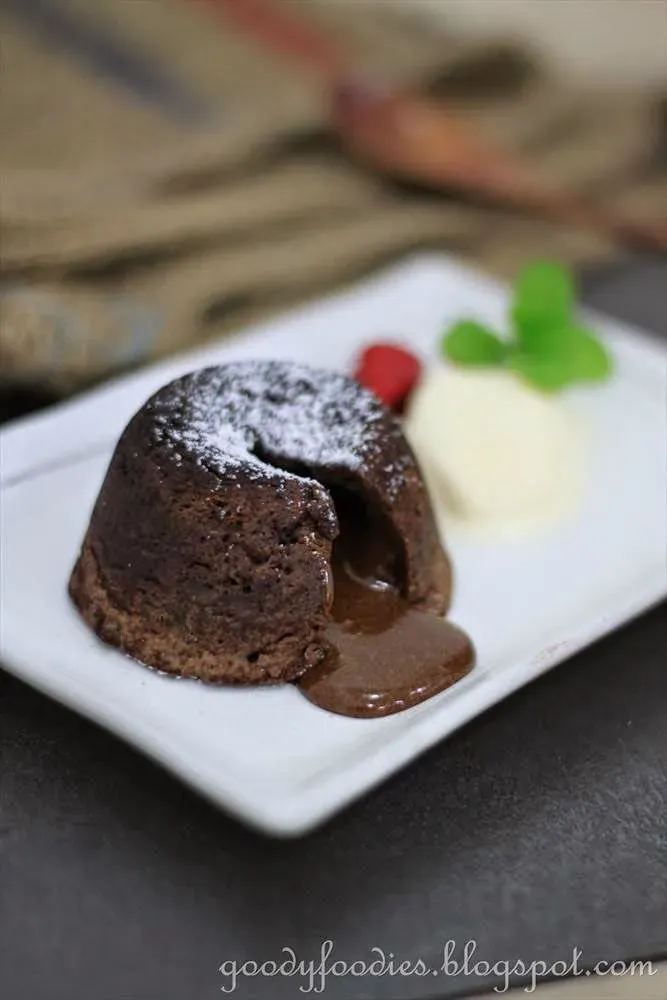Table of Contents
Ever tried making a chocolate lava cake at home, only to pull out a sad, solid chocolate puck or a collapsed puddle? You're not alone. The elusive molten center, the perfectly set edge – it feels like a culinary unicorn for many home bakers. Gordon Ramsay, however, seems to whip them up effortlessly on screen. What's the secret? It’s less magic, more method, and frankly, skipping the shortcuts that lead to disappointment.
Cracking the Code: Why Most Lava Cakes Fail (And Ramsay's Doesn't)

Cracking the Code: Why Most Lava Cakes Fail (And Ramsay's Doesn't)
The Great Molten Mystery: What Goes Wrong?
So you followed a recipe. Melted chocolate, mixed batter, poured it into ramekins, and held your breath as they baked. Then, the moment of truth: you inverted one onto a plate. Instead of a glorious cascade of warm, gooey chocolate, you got... a solid cake. Maybe slightly fudgy, sure, but definitely not *lava*. This is the fate of countless attempted molten chocolate cakes. The core issue usually boils down to a fundamental misunderstanding of what makes the center liquid while the outside sets. It's not magic; it's controlled underbaking, and most recipes don't stress the critical balance needed.
Ingredient Ratios and Oven Temperature Traps
Many recipes get the flour-to-fat ratio wrong. Too much flour, and you're just making a small, dense chocolate cake. Not enough fat (butter and chocolate), and you lose that rich, flowing core. Then there's the oven. A lukewarm oven is the enemy of the lava cake. You need fierce heat to set the outside quickly while leaving the inside deliberately uncooked. Think of it like searing a steak; you want a crust fast without cooking the middle through. Get the oven temperature wrong, or use ramekins that aren't properly prepped, and you're halfway to disappointment before the timer even starts.
- Common Lava Cake Failures:
- Overbaking (the most frequent culprit)
- Using too much flour
- Oven temperature too low
- Ramekins not greased and floured properly
- Not using high-quality chocolate
- Opening the oven door too often
How Ramsay Skips the Failure
Gordon Ramsay's approach isn't reinventing the wheel; it's just executing the fundamentals flawlessly, which is often the difference between edible and exceptional. His method emphasizes a high fat content from quality chocolate and butter, minimal flour, and crucially, a screaming hot oven combined with a cold batter. This combination creates a rapid temperature gradient. The outside bakes and sets quickly due to the high heat, while the cold center doesn't have time to cook through before you pull it out. It's a calculated risk, banking on that short, intense bake time to deliver the goods – that perfect, flowing molten core.
Mastering the Molten Core: The Gordon Ramsay Chocolate Lava Cake Recipe Secrets

Mastering the Molten Core: The Gordon Ramsay Chocolate Lava Cake Recipe Secrets
Quality In, Lava Out: The Ingredient Foundation
Look, you can't make gold from lead, and you can't make a transcendent molten core with subpar chocolate. This is where many home cooks stumble right out of the gate. Gordon Ramsay doesn't just grab any old chocolate chip bag from the pantry. He uses high-quality dark chocolate, typically in the 60-70% cocoa solid range. Why? More cocoa butter means more richness and, crucially, a smoother, more fluid melt. Combine that with good unsalted butter – not margarine, please, we're making dessert, not a science experiment gone wrong – and you have the fatty base that becomes your glorious lava. The ratio of chocolate and butter to the tiny amount of flour is key; it ensures the center stays liquid while the minimal flour provides just enough structure for the edges to set.
The Hot Oven, Cold Batter Paradox
Here’s the real trick behind the chocolate lava cake recipe Gordon Ramsay favors: thermal shock. You need a screaming hot oven, usually around 400°F (200°C), and batter that's been chilled slightly. When that cold batter hits the intense heat, the outside of the cake sets almost instantly, forming a crust. The inside, still cold, lags behind significantly. There isn't enough time at that temperature for the center to cook all the way through before the edges are perfectly baked. It’s a race against the clock, a calculated risk that pays off with that signature gooey, flowing center when you cut into it. Get this timing and temperature dynamic wrong, and you're back to sad chocolate pucks.
Essentials for Ramsay's Molten Core:
- High-quality dark chocolate (60-70% cocoa)
- Unsalted butter
- Fresh eggs
- Granulated sugar
- Just a touch of all-purpose flour
- A properly hot oven (preheated for ages)
- Chilled batter
StepbyStep: Making Your Gordon Ramsay Molten Chocolate Cakes

StepbyStep: Making Your Gordon Ramsay Molten Chocolate Cakes
Prep Like a Pro: Getting Your Ramekins Ready
Alright, let's get down to the actual doing of this chocolate lava cake recipe Gordon Ramsay style. First things first, the ramekins. This isn't a step to rush or skip. You need to butter them generously, and I mean *generously*, all the way up the sides. Use softened butter, not melted, so it coats properly. Then, dust them with cocoa powder, tapping out the excess. Don't use flour if you can help it; cocoa powder gives a better flavor and color to the finished cake edges. This double-layer of non-stick insurance is crucial for that clean release when you flip the cake. Nothing is more soul-crushing than a perfect lava cake stuck to its dish. While you're doing this, get your oven preheating to that scorching 400°F (200°C). Give it plenty of time to get *really* hot.
Melt, Mix, and Chill: Building the Batter
Next up is the chocolate. You need to melt that high-quality dark chocolate and unsalted butter together. Do it gently, either over a double boiler or in the microwave in short bursts, stirring frequently. Don't scorch it; burnt chocolate is a crime. Let it cool slightly while you whisk together the eggs, egg yolks (extra yolks add richness!), and sugar until pale and slightly thickened. This takes a few minutes of solid whisking. Fold the cooled chocolate mixture into the egg mixture, then gently fold in the small amount of flour and perhaps a pinch of salt or a splash of vanilla. Don't overmix; you just want it combined. The batter should be thick but pourable. Pour this glorious chocolate mixture into your prepared ramekins, filling them about three-quarters of the way. Now, and this is key for the chocolate lava cake recipe Gordon Ramsay uses, pop those filled ramekins into the fridge for at least 15-20 minutes. Chilling the batter enhances that hot oven/cold batter dynamic we talked about.
Batter Prep Checklist:
- Melt chocolate and butter gently.
- Whisk eggs, yolks, and sugar until pale.
- Fold chocolate into egg mixture.
- Fold in flour (don't overmix!).
- Fill ramekins ¾ full.
- Chill filled ramekins for 15-20 minutes.
Beyond the Basic: Tips, Tricks, and Twists for Your Lava Cakes

Beyond the Basic: Tips, Tricks, and Twists for Your Lava Cakes
Timing is Everything: The Bake and the Rest
You've prepped the ramekins, mixed the batter, chilled them, and now they're in that screaming hot oven. The clock starts the moment they go in. For the chocolate lava cake recipe Gordon Ramsay uses, the magic number is usually around 12-14 minutes at 400°F (200°C). But ovens vary wildly. Don't just trust the timer blindly. Look for the signs: the edges should be set and pulling slightly away from the ramekin, and the center should still look soft, maybe even a little jiggly. If the whole top looks solid and dry, you've gone too far. Pull them out *before* you think they're perfectly done. They continue to cook slightly from residual heat. Once out, resist the urge to flip them immediately. Let them rest for just 1-2 minutes in the ramekins. This crucial resting time allows the edges to firm up enough for a clean release, preventing heartbreak when you invert them.
Spice it Up: Flavor Variations and Serving Suggestions
While the classic chocolate lava cake recipe Gordon Ramsay presents is a masterpiece on its own, that doesn't mean you can't play around. A pinch of espresso powder whisked into the batter intensifies the chocolate flavor beautifully. A little orange zest brings a bright, sophisticated note. For a kick, a tiny amount of cayenne or chili powder adds a surprising warmth that complements the rich chocolate. Think about what you serve alongside it too. A simple scoop of good vanilla bean ice cream is classic for a reason – the contrast in temperature and flavor is spot on. A dollop of fresh whipped cream, a berry compote, or even just a dusting of powdered sugar can elevate the presentation without overpowering the star of the show: that glorious molten center.
Lava Cake Variations to Try:
- Add 1 tsp espresso powder to the batter.
- Stir in 1 tsp fresh orange zest.
- Include a pinch of cayenne or chili powder for heat.
- Swirl in a spoonful of peanut butter before baking.
- Place a salted caramel candy in the center of the batter before baking.
Achieving Lava Cake Nirvana
So there you have it. The seemingly simple goal of a chocolate lava cake with a perfectly runny center often trips up home cooks, but it doesn't have to. By sticking to the principles behind the Gordon Ramsay chocolate lava cake recipe – minimal flour, high fat, precise temperature, and respecting the rest time – you bypass the usual pitfalls. It's about control, not complexity. Nail these steps, and you'll consistently produce those rich, molten masterpieces that look and taste like they came straight from a Michelin-starred kitchen. It's a dessert that demands a little focus but pays off big time.
